At the beginning of January, STOR-i CDT hosted its ninth annual conference where key researchers from Statistics, Operational Research and Industry presented a range of interesting talks. Additionally, STOR-i PhD students showcased their work during an evening poster session. This event provided opportunities to network with individuals from a variety of institutions and industries.
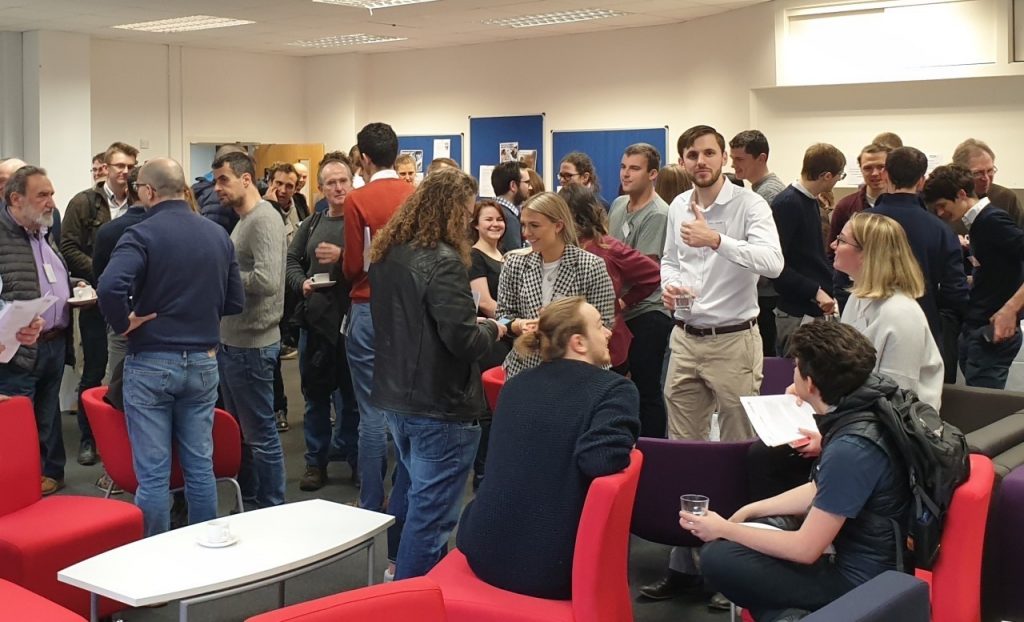
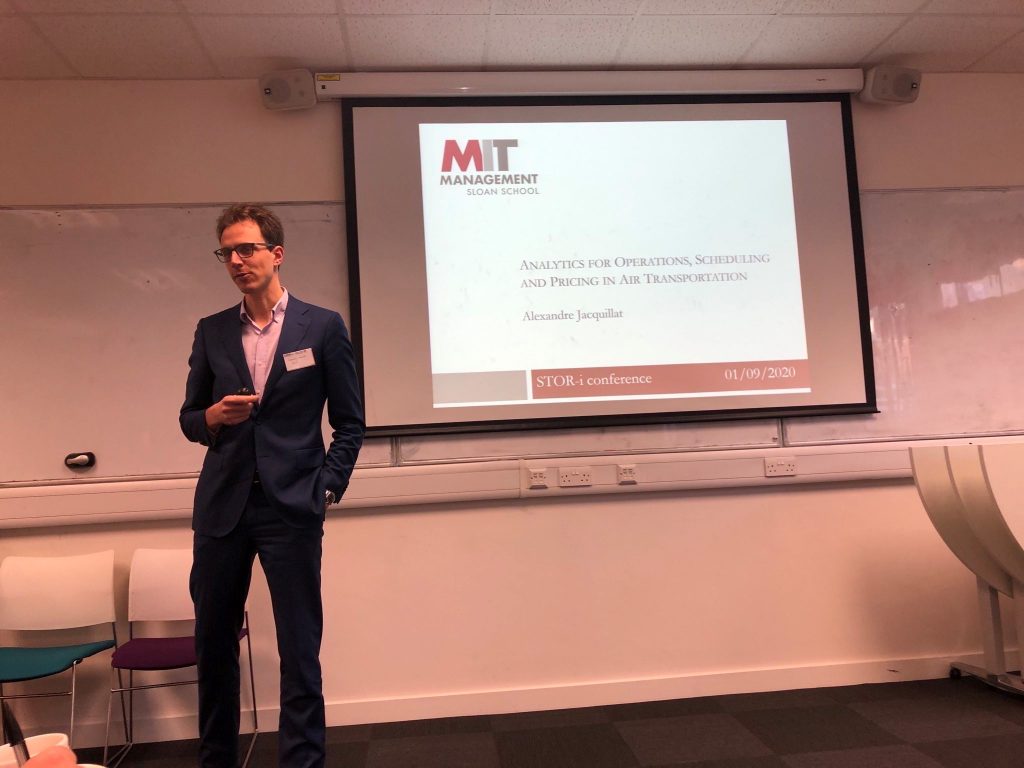
Alexandre Jacquillat initialised the conference by presenting his results from various analytical projects concerned with supporting the operations, scheduling and pricing in air transportation. Alexandre is an Assistant Professor of Operations Research and Statistics at the MIT Sloan School of Management. His research applies to areas in transportation with the aim to promote efficient scheduling, operations and pricing practices.
Henry Moss, a third year STOR-i PhD student, then proposed MUMBO (Multi-task Max-value Bayesian Optimisation), this is used to perform efficient optimisation (maximising or minimising a function subject to constraints) by evaluating low-cost functions related to our target function. Henry’s research lies at the intersection of Statistics and Operational Research, with a focus on Bayesian Optimisation.
The morning session concluded with a talk from Valeria Vitelli, an Associate Professor at the Department of Biostatistics, this is part of the Oslo Centre for Biostatistics and Epidemiology, at the University of Oslo. Valeria presented some recent advances in a statistical model that works well in handling uncertainty in ranking and different kinds of data; the Mallows Rank Model. Her research spans several areas of Mathematics and Statistics;
- Functional data analysis with applications in physiology and biostatistics,
- Machine learning for describing people mobility,
- Statistical genomics of cancer and high-dimensional data models
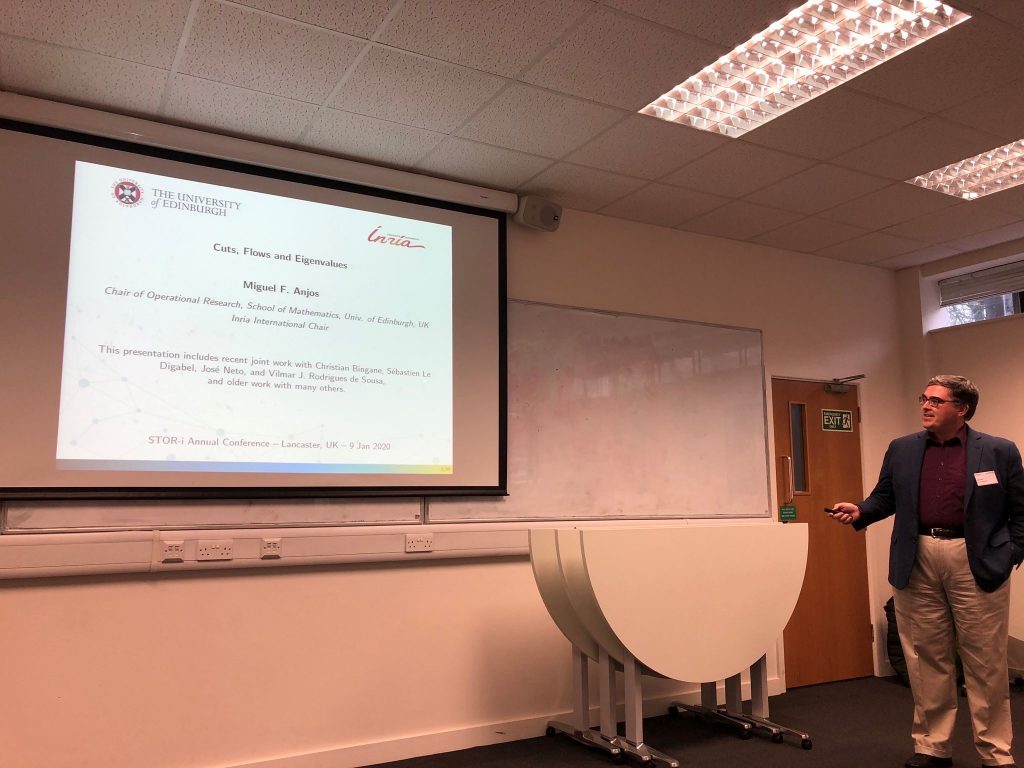
After the lunch break, Miguel Anjos discussed some lesser-known instances of his research in the theory, algorithms and applications of mathematical optimisation. Miguel holds the Chair of Operational Research at the School of Mathematics, University of Edinburgh. His research focuses on the application of optimisation to problems in power systems management and smart grid design.
Georgia Souli, another third year STOR-i PhD student, proposed her procedures for generating valid linear inequalities that are added to optimisation problems in order to reduce the required solution time and improve solvers’ performance. Georgia also works with Morgan Stanley on a variety of large-scale optimisation problems.
Next, Richard Davis, the Howard Levene Professor of Statistics at Columbia University, delivered some of his research in time series of counts. He focussed on relaxing the assumption about the probability mass functions relating the observations to a state variable. Typically, this is chosen to be a Poisson or Negative Binomial distribution, but Richard detailed how to reduce this to a more general form and the consequences of this change.
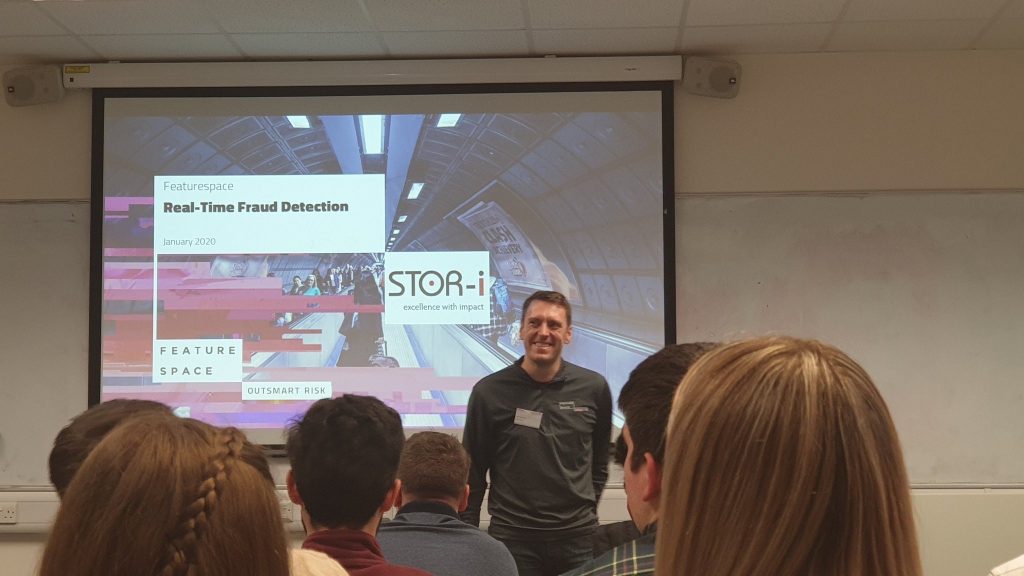
Tom Flowerdew gave the penultimate talk of the day about applying a statistical learning model to the fraud detection processes. Tom is a STOR-i alumnus who now works for Featurespace, a world-leader in Adaptive Behavioural Analytics. They work for banks and other financial institutions by scoring transactions based on their risk of fraud. Tom explained some of the challenges with this and how statistical models are employed to tackle these problems successfully. To find out more about Featurespace, click here.
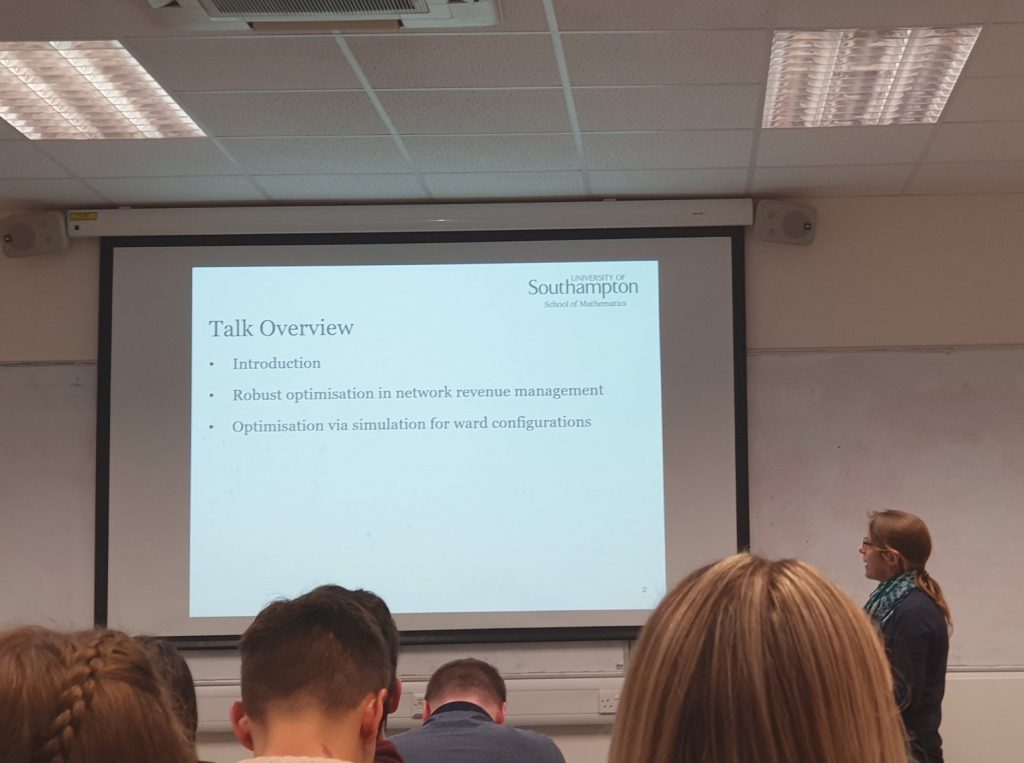
To close the first day of the conference, Christine Currie presented two applications of optimisation where some elements of the system are subject to uncertainty. The examples discussed were concerned with the passenger transport industry and healthcare. Christine presented methods that account for the randomness of both inputs (e.g. demand for plane tickets or number of patients requiring a bed on a hospital ward) and outputs of a system (e.g. plane tickets sold or number of patients on a ward) when optimising another element (e.g. maximising revenue or minimising waiting time). Christine is Associate Professor of Operational Research in Mathematical Sciences and Director of CORMSIS (Centre for Operational Research, Management Science and Information Systems) at the University of Southampton.
Veronica Vinciotti, a reader in statistics at Brunel University London, started the second day by explaining how possible dependencies in a firms’ risk or default should be accounted for in commonly used credit risk models. Veronica explored how transaction data can be used for such models and the advantages that this may bring in terms of predictive power. She then proposed a model to capture dependencies as well as an algorithm to manage the high-dimensionality data and some computational challenges.
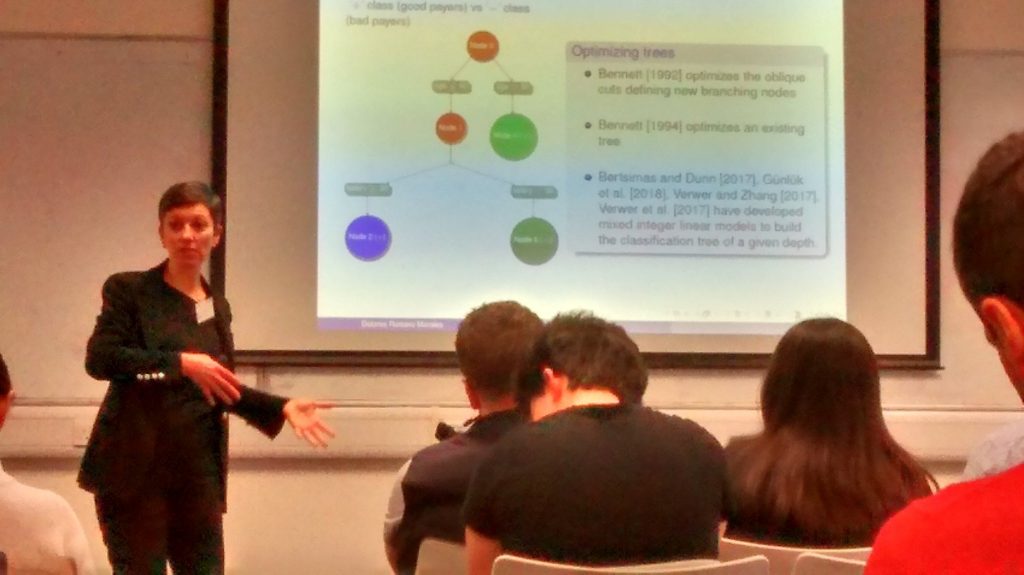
Dolores Romero Morales then proposed data science models that strike a balance between accuracy and interpretability so that they provide explanations on the task to the user who interacts with the models. Dolores is a Professor in Operations Research at Copenhagen Business School; her areas of expertise include Supply Chain Management, Data Mining and Revenue Management.
Another STOR-i alumnus presented next, Ciara Pike-Burke who is a postdoctoral researcher at Universitat Pompeu Fabra in Barcelona. Ciara’s research interests include online learning, multi-armed bandits and reinforcement learning. In this talk, Ciara focussed on multi-armed bandits, where at each time step a player selects an action and receives some reward from selecting it, the aim is to maximise total reward. It is commonly assumed that this reward is constant, but Ciara proposed algorithms that perform well when the reward is not constant and depends on the history of the players’ actions.
Brendan Murphy concluded the conference by proposing a new method for model-based clustering of continuous data. Brendan is Full Professor and Head of School in the School of Mathematics and Statistics at University College Dublin. He has research interests in clustering, classification and latent variable modeling with applications from social sciences, food science, medicine and biology.
The STOR-i conference then closed with a lunch buffet which provided another opportunity to network with any external attendees. I really enjoyed listening to all of the talks and learning about many interesting applications of topics covered during the MRes so far. It was a great occasion to meet professors from other universities, industry professionals and STOR-i alumni as well as hearing from current students in both the presentations and the poster session. I intend to write further posts in the coming weeks that will discuss some of the talks in more detail.
I needed to thank you for this great read!! I absolutely loved every bit of it.
I’ve got you saved as a favorite to check out new things you post…